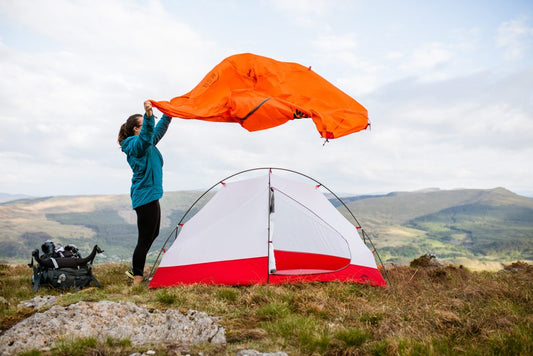WASHING YOUR PACKRAFT:
Cleaning it with mild soap is essential for keeping your boat in good condition and preventing the spread of invasive species in waterways.
Ensure proper drying of your packraft: Storing a wet boat can lead to damage to the TIZIP and the development of persistent odors that are challenging to eliminate. It is recommended to hang your boat to dry after each trip before storage. Another excellent option is to let it dry while inflated.
STORAGE OF YOUR PACKRAFT:
Once it is clean and dry, store your packraft in a cool, dry place with good ventilation. Hanging it, loosely rolling it, or loosely folding it are all suitable methods. To prevent UV damage, avoid storing your packraft in direct sunlight.
Avoid using “UV-Protectant” or similar sprays on your packrafts: These sprays create a hard outer coating that hinders the adhesion of repair materials and glue to the packraft. If you accidentally apply a UV-Protectant spray to your boat, it will wear off over time.
TIZIP CARE AND MAINTENANCE:
After each trip and regularly while in the field, it is crucial to clean, dry, and lubricate your TIZIP. Keep the zipper chain clean and free from sand, dirt, and debris. Avoid applying lubricant directly to the chain, as it may attract sand. To clean the zipper, start with a small brush, such as a used toothbrush, and use warm soapy water for tougher cleaning.
It is important to allow the zipper to dry before closing it. Failure to do so can result in rotting and cracking of the zipper. For long-term storage, it is recommended to clean, dry, and close the zipper.
Proper lubrication technique: The TIZIP-zipper should always move smoothly and effortlessly. If your zipper is difficult to operate or feels sticky, it requires lubrication. Before applying lubricant, ensure that the zipper chain is clean.
- Close the zipper and apply lubricant to the cloth. Use the cloth to spread the lubricant onto the urethane laminated exterior of the zipper. Avoid applying lubricant to the zipper teeth.
- Keep using the cloth until the entire exterior surface of the closed zipper is coated with lubricant.
- Wipe off any excess lubricant from the zipper, as it can attract sand and dirt.
- Open the zipper and lightly lubricate the chain and sealing edges using the cloth.
- Apply a small amount of lube to the docking end.
- Open and close the zipper multiple times. It should now move smoothly and close easily. If necessary, repeat the above steps.
The goal is to maintain a thin layer of lubricant along the length of the zipper, ensuring smooth movement and easy docking of the zipper head.


